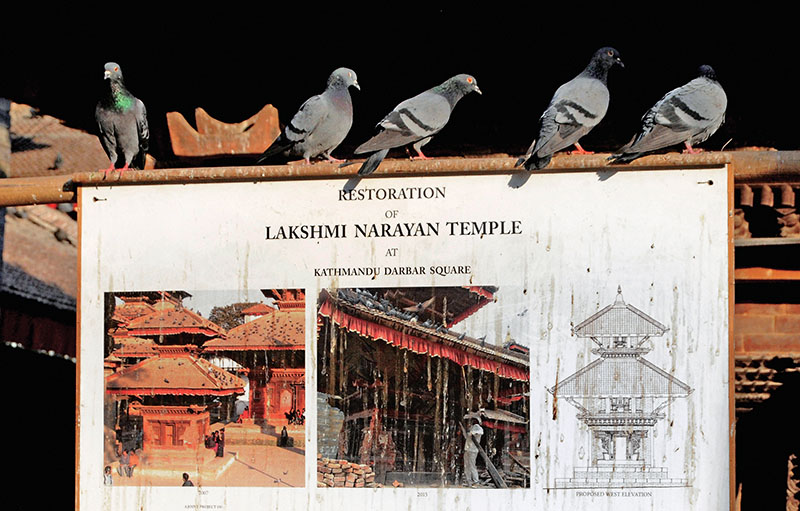Inventory of salvaged artefacts prepared
Kathmandu, December 27
Over 1,565 artefacts, including three copper inscriptions, five stone idols, and other carved wooden members such as doors and windows were re-assembled during the rescue operation and subsequent clearing of Hanumandhoka Durbar Square, according to UNESCO.
Hanumandhoka had suffered total collapse of 10 structures in the earthquakes, and significant damage to many others. A UNESCO-supported project to create an inventory documenting objects recovered from Hanumandhoka has been successfully completed. Pillars (thaam), struts, brackets (meth), joist heads (dhalinkhwas), cornices (jhalar) and icons were recovered, with majority deemed reusable in their original locations, it informed
The task of salvaging, sorting and cataloguing the items, which ranged from screening a variety of objects, including decorative and large wooden members to smaller pieces and stone idols, was immense.
The sites contained vast mixtures of objects in various conditions, and a team of experts led by Prof Mukunda Raj Aryal and Sukra Sagar Shrestha worked extensively to create a clear inventory of the monuments. The project covered eight of the totally collapsed monuments, and two of the damaged structures, said UNESCO.
Work on the project began after an agreement was made in November 2015 among stakeholders, including the Department of Archaeology, Hanumandhoka Durbar Museum Development Committee, ICOMOS Nepal and UNESCO. UNESCO entrusted ICOMOS Nepal with engaging master carpenters and skilled craftspeople, as well as museum staff, volunteers and labourers.
Hanumandhoka is a complex of Durbar Square of Kathmandu with structures including the royal palace of the Malla kings and of the Shah dynasty. It is one of the seven monument zones of the Kathmandu Valley World Heritage Site.
Key sites such as the Kasthamandap were included in the project, which will serve to provide a clear and essential inventory of items to be used in the rebuilding process, as well as preserve the rich heritage of the city.






